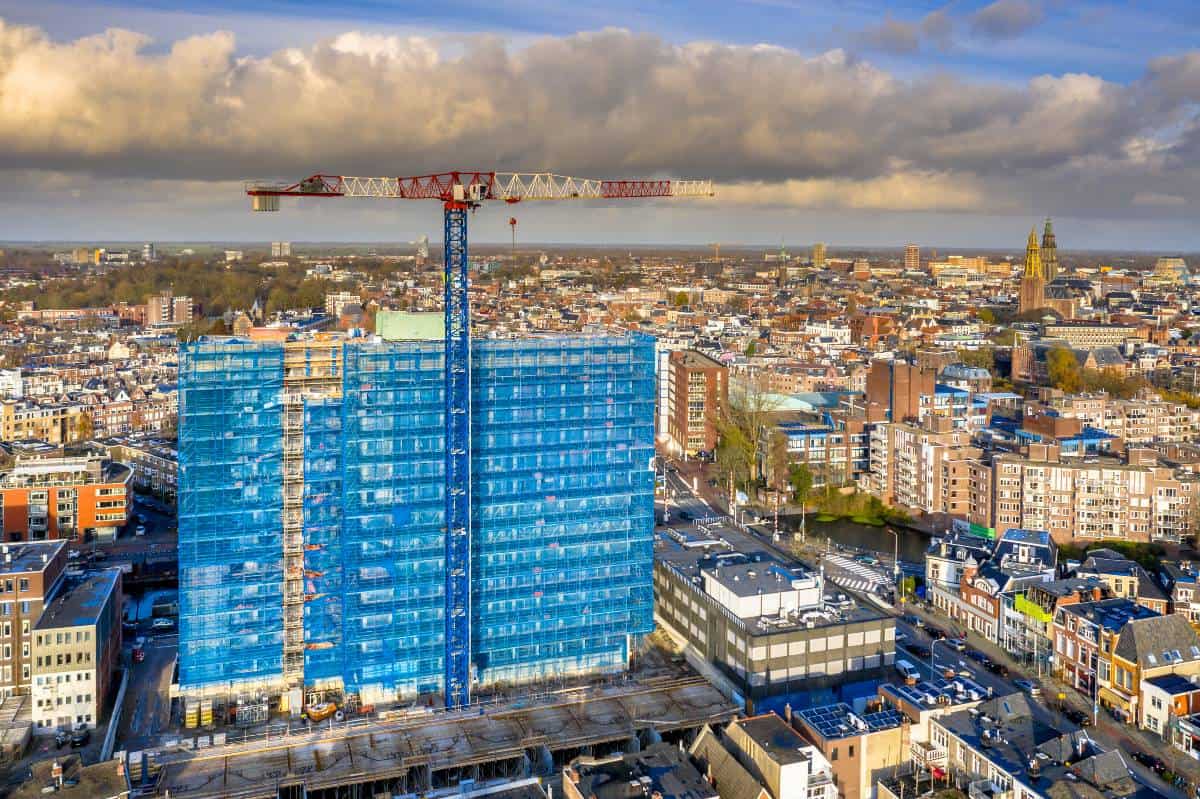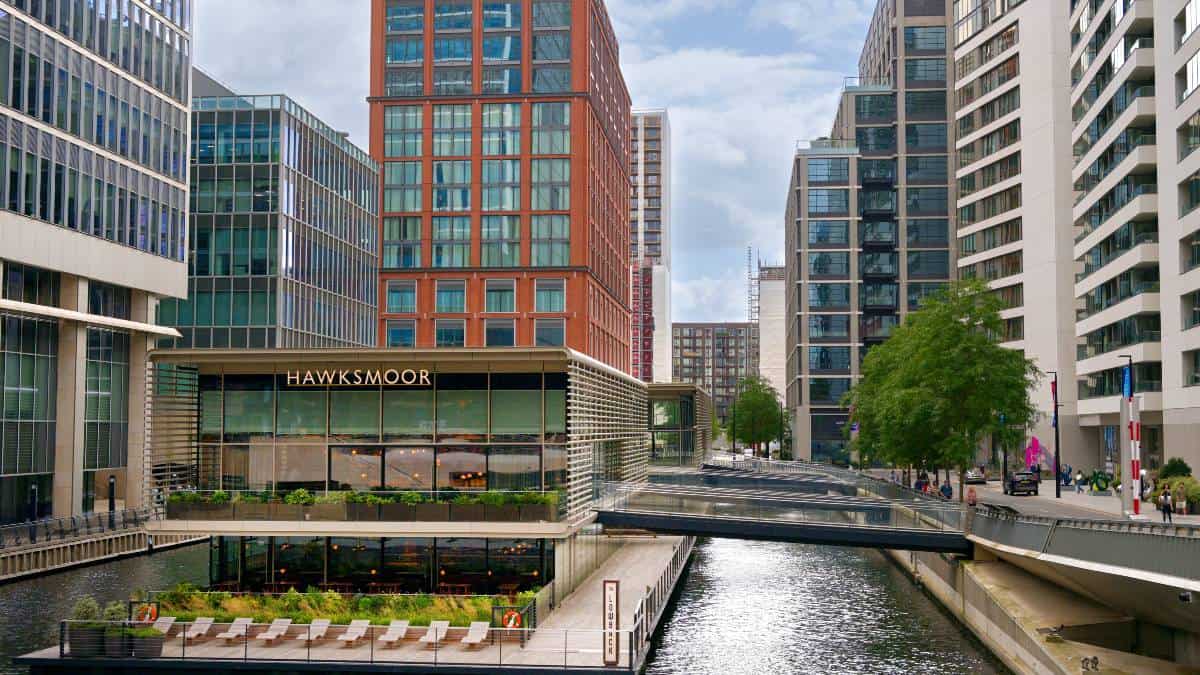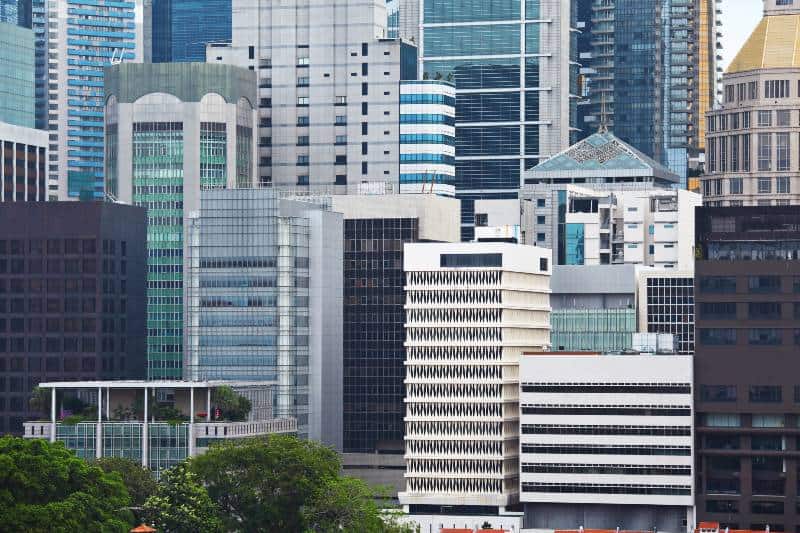As a commercial real estate expert with 18+ years specializing in the Los Angeles market, I’ve witnessed an accelerating trend toward mixed-use development projects. These master-planned communities integrate complementary uses like shops, offices, green spaces, and apartments into dense, amenity-rich neighborhoods.
Key Takeaways
- Mixed-use development combines residential, commercial, and cultural uses into walkable neighborhoods connected by public transit
- Benefits include increased tax revenue, affordable housing, reduced traffic congestion
- Recent metro expansions and relaxed zoning creating opportunities in the LA market
The Evolution of Mixed-Use Development in Los Angeles
The traditional zoning approach segregated housing, commerce, and recreation into isolated pockets connected mainly by cars. However, preferences have shifted towards walkable urbanism and transit-oriented development (TOD). This live-work-play model offers inherent advantages over fragmented development patterns.
Since the pandemic disrupted retail, older struggling malls have become prime targets for conversion to vibrant mixed-use complexes meeting today’s preferences. With LA confronting housing shortages and traffic gridlock, mixed-use represents a sustainable path linking homes, jobs, and mobility.
Benefits of Mixed-Use Development
Integrating complementary uses like residential, retail, office, hospitality, and recreation while emphasizing walkability and access to public transit provides advantages for various stakeholders involved in mixed-use developments.
For Developers & Investors
Developers and investors can undertake projects with mixed zoning that may not have been feasible if restricted to just housing or just shops. For example, integrating some retail and office space helps offset the high cost of building multifamily rental or condo units. The blend of customers also facilitates faster lease up timeframes since new residents provide an initial customer base to support ground floor cafes and services. Layering residential revenue atop other uses mitigates risk compared to relying solely on either the multifamily or retail real estate market.
For Local Governments
On the public sector side, municipalities benefit from increased property tax and sales tax generation concentrated in a compact footprint. This supports the city’s goals of promoting infill development rather than continuous sprawling suburban growth. Mixed-use projects that incorporate transit and green building principles further help local governments advance smart growth strategies.
For Residents & Communities
For neighborhood residents and communities, the integration of uses delivers convenience through walkable access to amenities like shopping, restaurants, and recreation. Developments focused on pedestrians and public transit users encourage residents and visitors to make trips via bus or rail rather than cars. This fosters connectivity while reducing traffic congestion and greenhouse gas emissions. Thoughtfully designed projects also cultivate a sense of place and connectedness through community gathering venues like plazas, parks, and rooftop lounges.
Key Factors Driving Adoption in LA
Several interrelated forces are catalyzing more mixed-use developments across the Los Angeles metropolitan area.
Transit Expansion
Los Angeles has invested heavily in public transit over the past decade, with Metro Rail’s network of subway and light rail lines expanding reach. This enables transit-oriented development (TOD) around new stations, with the promise of connecting residents to jobs via mobility alternatives to cars. Riders can access emerging mixed-use neighborhoods built around transit without traffic headaches.
Zoning Changes
In response to the deep housing shortage, local governments have introduced more flexible zoning rules regarding allowable density and parking requirements. Legislators aim to encourage the construction of smaller, affordable units in previously prohibited areas. Updated building codes also enable conversions of old offices and hotels through adaptive reuse to resurrect the shells for modern needs. Streamlining the project review process further expedites more building.
Evolving Housing Preferences
Consumer preferences continue shifting, as younger generations and downsizing baby boomers opt for the convenience and vibrance of urban living over detached suburban houses. Mixed-use developments cater to these groups desiring smaller-format, amenity-rich rental apartments or condos near dining, entertainment, and work options: walkability and accessibility rank over square footage.
Ongoing Housing Shortage
Integrating modestly priced units into market-rate communities through mixed-income models brings solutions to supply deficits across submarkets. Density bonuses permitting added floors in exchange for affordable apartments assist in housing those of varying economic means. This also prevents the displacement of lower-income residents as neighborhoods gentrify.
Commercial Real Estate Trends
Lastly, the rise of e-commerce and remote work has hastened declines for traditional retail centers and office parks designed for bygone eras. As these single-use properties struggle with vacancies, introducing complementary uses like residential and hospitality injects new life. For aging malls and corporate campuses prime for redevelopment, mixed-use conversion retains location advantages while upgrading to current market realities.

| Factor | How It’s Driving Mixed-Use Adoption |
|---|---|
| Transit Expansion | TOD around new Metro stations |
| Zoning Changes | Allows denser and more diverse development formats |
| Housing Preferences | Caters to demand for urban living with amenities |
| Housing Shortage | Boosts supply across income ranges |
| Commercial Declines | Breaths new life into struggling malls/offices |
Case Studies of Successful Developments
Los Angeles developers have delivered creative mixed-use projects meeting the demand for locating homes and workplaces in amenity-rich neighborhoods near transit:
The Broadway
The historic Broadway department store in downtown LA laid vacant for over 30 years before being adaptively transformed into luxury rental apartments. The beautiful Beaux Arts style building from 1908 was restored to its former glory. Ground floor retail and services conveniences residents, workers, and visitors.
Cumulus
This new transit-oriented village in West LA comprises residential apartments, a hotel, offices, shops, restaurants, a grocery store, and abundant public spaces – all woven together atop shared parking infrastructure. The community is designed for sustainability, having earned LEED Gold certification.
Ivy Station
Culver City’s Ivy Station caps the western terminus of Metro’s Expo Line. Apartment towers rise above street-level stores and eateries. The open layout allows sunlight to reach public walkways and plazas for an airy, garden-like setting.
Future Outlook & Innovations
Industry experts envision a continued expansion of mixed-use development, especially concentrated around new transit stations. Advancements in technology and sustainability may yield communities with features like:
- Thermal energy grids with heating/cooling shared efficiently across buildings
- Flexible live/work spaces adapted for hybrid remote workforces
- Public/private financing tools that spur the development of affordable housing and infrastructure upgrades
Challenges & Barriers
However, complex mixed-use projects also face obstacles that can easily derail execution:
- Neighborhood groups may oppose the density, height, or gentrification impacts
- Securing construction financing is difficult until enough pre-lease agreements are signed
- Approval timelines drag on when encountering community resistance
- Rising costs of materials and labor apply pressure
Recommendations for Stakeholders
Proactive engagement by involved parties can streamline approvals and success:
Government
- Allow administrative approvals for projects meeting planning objectives
- Consider financing incentives like tax increment funding
Developers
- Pursue early community dialogue and buy-in
- Design sustainability features from the outset
Investors
- Favor projects with committed anchor office tenants
- Focus on housing near job centers and public transit
| Stakeholder | Recommendations |
|---|---|
| Government |
|
| Developers |
|
| Investors |
|
Why is Mixed-Use Development Popular in Los Angeles?
Los Angeles embraces mixed-use developments for several pressing reasons.
Impact of Mixed-Use on Urban Planning
For decades, LA grew outwards rather than upwards, with single-family homes sprawling into far-flung suburbs. This auto-centric pattern stagnated mobility while isolating uses. Mixed-use projects transform neighborhood design by stitching together complementary uses in walkable proximity. Residents stroll to shops and offices once requiring cars. Compact construction promotes sustainability over expansion into natural spaces. By creating vibrant, self-contained communities, mixed-use aligns with contemporary urban planning best practices.
Integration of Transportation
Car culture still reigns in LA, but public sentiment and political will now favor transit. Integrating Metro rail access seems imperative for new developments to limit traffic headaches. Mixed-use developers colocate apartments, hotels, and jobs around transit stations. Communal amenities discourage driving by fulfilling needs locally. Rideshare pick-up zones, bike lanes, and other mobility features let residents connect globally through LAX while enjoying their small-town daily.
Role in Addressing Housing Crisis
With severe housing undersupply, the region desperately requires density. Mixed-use formats seamlessly incorporate apartments and condos atop or beside patron-generating retail. Vertical construction utilizes smaller footprints more efficiently than horizontal single-family homes. Crucially, integrating modestly priced units into market-rate communities avoids displacement while serving various income levels. Stacked uses facilitate progress on intertwined issues: housing, mobility, and sustainability.
How are Mixed-Use Developments Planned and Developed in Los Angeles?
Bringing a mixed-use vision to fruition in Los Angeles involves collaborative perseverance between developers and municipal authorities.
Gaining City Approval
developers introduce concepts to local leaders and agencies through preliminary briefings. Initial feasibility frames size, scale, and uses. Environmental studies, traffic impact analysis, and public hearings gauge community reception. Zoning changes face resistance; written findings justify deviations. Architectural review boards scrutinize aesthetics. Once entitlements align with general and specific plans, the city council greenlights groundbreaking. Politics remains unpredictable but early outreach smoothens passage.
Developer-City Collaboration
While complex, mixed-use policy supports smart density. Planners advise zoning to catalyze growth around transit. Developers respond with residential-retail plots promoting walkability, affordability, and sustainability. Relaxed parking minimums prevent acres of asphalt. Height relaxations encourage affordable units via density bonuses. Cities must balance neighborhood character with future-facing projects. Aligning stakeholder incentives leads to new inclusive communities.
Integrating Affordability
Satisfying regulated affordable quotas enables mixed-income diversity. Developments over 10 units reserve percentages for lower-income brackets. Fees fund off-site construction when on-site is untenable. Density bonuses award additional market-rate units to offset below-market rents. Ground floor retail helps cross-subsidize residential. Tax credits, grants, and public-private partnerships make integration attainable despite slim margins. Graduated income tiers prevent homogeneity.
Key Concerns in Mixed-Use Development Projects in Los Angeles
Bringing mixed-use complexes to fruition raises several critical considerations for developers in balancing priorities.
Balancing Residential and Commercial
Designing the right mix of apartments and retail requires an understanding of target resident demographics. Too few shops risk empty storefronts, while oversupply steals customer potential. Context informs calculations – student housing demands different services than senior living. Revenue reliance fosters fiscal resilience; combining rents from retailers and residents evens cashflow. Meanwhile, construction costs climb higher per square foot for mixed-use structures versus single-use. Modeling projected returns helps optimize investment allocation between spaces to fulfill neighborhood needs.
Sustainability Practices
Sustainable construction is now an expectation, not just best practice. Environmentally-conscious city codes and consumer preferences demand net zero emissions, renewable energy, water conservation, and waste reduction. Efficient mixed-use frameworks lend themselves to district solutions like shared thermal heating/cooling plants rather than individual boilers. Compact solar panel arrays suffice rooftop demand. Stormwater captures irrigation supply. Though premium finishes and EV charging stations add costs, forthcoming regulations necessitate proactive adoption.
Community Engagement
Community concerns over neighborhood character alteration lead to resistance. Encroaching density raises anxieties. Allaying fears via transparent dialogue and education promotes accord. Developers hosting local open houses furnish details reinforcing value-add propositions while gathering input to shape visions responsively. Compromises may emerge on building heights or commercial tenant mix. Profitability relies on public buy-in. Successful planning balances bottom lines with end-user endorsement to sustain mixed-use developments for the long run.
Future Trends in Mixed-Use Development in Los Angeles
Industry leaders expect several cutting-edge directions to shape next-generation mixed-use communities across metro Los Angeles:
Innovative Architectural Design
Beyond vertical glass towers, creative aesthetics will distinguish new projects. Adaptive reuse of mid-century warehouses enlivens cultural heritage through facade retention. Cantilevered pools, lush rooftop forests, and stepped terrace gardens fuse nature with urbanity. Sculptural facades and fragmented geometry reflect contemporary tastes. Height variations and articulated massing break imposing scales. WAS Design’s Cumulus melds the commercial atrium, residential courtyard, and public paseo seamlessly? Expect panache driving marketing as much as functionality.
Transit-Oriented Development
Transit-adjacent mixed-use growth will accelerate alongside Metro’s expansion. The linkage between rail connectivity and demand drives development to underutilized lots near stations. Features like ride-share lounges cater seamlessly to car-free residents. Walk Scores replace zip codes as selling points. Parking reductions free space for eco-mobility infrastructure. As LA embraces density, expect more live-work environs clustered around fresh subway and light rail access across districts.
Tech-Enabled Management
Integrating the Internet of Things networks introduces operational efficiencies. Sensor-enabled lighting, leak detection, and parking space tracking optimize energy, prevent water waste, and simplify parking. Smart access controls heighten security while enabling flexibility. Augmented reality tours supplement traditional marketing. Autonomous transit shuttles may one day be summoned on-demand. Seamless home technologies enhance convenience. As mixed-communities scale up, technology promises behind-the-scenes enhancements to match modern quality expectations.
FAQs
What are the benefits of mixed-use development?
Mixed-use development provides benefits for municipalities (increased tax base, reduced traffic), developers and investors (faster lease-up, long-term returns) as well as community residents (walkability, sustainability).
What factors drove the growth of mixed-use real estate in Los Angeles?
Key factors include Metro’s expanding rail network, relaxed zoning regulations, strong housing demand, aging malls/offices ready for redevelopment, and preferences for amenity-rich, transit-connected neighborhoods.
How can new mixed-use development help alleviate LA’s housing units crisis?
Integrating residential into commercial areas helps boost the housing supply with smaller units at various price points to serve different income levels. It also promotes affordable housing through density bonuses.
What are some best practices for making mixed-use projects successful?
Critical success factors include extensive community engagement, securing anchor tenants early, designing for sustainability from day one, and leveraging public/private financing tools to spur development.
What does the future hold for mixed-use real estate in Los Angeles?
The mixed-use pipeline will continue expanding, especially around new transit stations. We’ll see more innovative sustainability features, flexible live/work spaces tailored for hybrid remote workforces, and new funding models to catalyze affordability, infrastructure upgrades, and neighborhood enhancements.
How many stories will the new apartment complex in NoHo have?
The new apartment complex in NoHo is planned to be a high-rise building, with approximately 35 stories.
Who approves mixed-use developments in Los Angeles?
Mixed-use developments in Los Angeles are typically approved by the City Council and the Planning Commission after a thorough review process.
Conclusion
I know from my 18 years of experience that commercial real estate can feel confusing and stressful at times. There are so many complex factors to weigh with mixed-use developments – from securing financing to winning over the community. It’s a lot for any business owner or investor to navigate.
Please don’t hesitate to schedule a consultation with me. I’m here as your trusted advisor to understand your unique situation, challenges, and aspirations. We’ll have an open conversation about how mixed-use could align with your goals, or if another direction makes more strategic sense. I promise to be an empathetic sounding board, ask thoughtful questions, and provide ideas tailored to you.
I aim to relieve your uncertainties around commercial real estate so you feel confident, focused, and in control. I want you to have the clarity and direction needed to make smart decisions that set your business up for sustainable growth. Let’s have a productive discussion on the best path forward.




